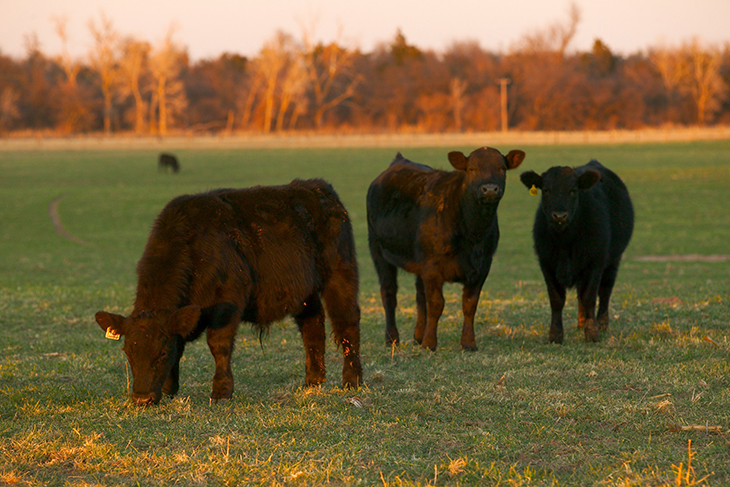
Conditions favorable for cattle backgrounding and stocker operations this fall
Tuesday, August 14, 2018
Many cattle producers are looking at current markets with interest, which currently suggest opportunities for stockers or backgrounding this fall.
“Value of gain for added feeder cattle weight is largely a reflection of feedlot demand for feeder cattle of various weights,” said Derrell Peel, Oklahoma State University Cooperative Extension livestock marketing specialist.
For example, combined Oklahoma feeder auction prices in the first week of August for 465-pound steers were $171.59 per hundredweight. The price for 774-pound steers was $150.65 per hundredweight. That works out to a value of gain of $1.19 per pound on 309 pounds of gain.
“A value of gain at this level indicates relatively less feedlot demand for lightweight feeders and is an economic signal for increased stocker production,” Peel said. “If feeder cattle prices maintain a similar price relationship into the fall and forage conditions are good, fall feeder markets may follow traditional seasonal price patterns rather closely.”
Oklahoma feeder cattle prices averaged nearly 4 percent above one year ago in the first week of August with calf prices increasing from the previous week. Feeder prices appear to be holding strong despite continued growth in feeder cattle supplies.
“Combined Oklahoma feeder auction totals have averaged 13 percent higher year-over-year since early July,” Peel said. “National data for feeder and stocker cattle sales in the month of July increased 7 percent compared to this time last year.”
Furthermore, the July Cattle Report estimated the 2018 calf crop to be nearly 2 percent higher than 2017. Estimated feeder supplies on July 1 were 0.5 percent higher than one year ago.
“All indications are that fall feeder markets will feature a calf run larger than last year and abundant feeder supplies,” Peel said.
Prices for feeder cattle typically decline seasonally for all weight classes after August. Calf and stocker cattle weighing up to 600 pounds typically have a seasonal low price in October while heavier feeder cattle decline from an August peak lower through the end of the year. On average, feeder cattle prices decline 4 percent to 5 percent from August to lows in the fourth quarter of the year.
“There is plenty of supply pressure to expect seasonal price declines or more this fall,” Peel said. “However, feeder cattle demand will be the key, with stocker demand being an important determining factor in calf prices, and that will largely be determined by forage conditions.”
In the Southern Plains states, stocker cattle demand for winter wheat grazing plays a big role in seasonal demand to offset large seasonal supplies of calves in the fall. The U.S. Drought Monitor shows widespread moderate to extreme drought conditions in western Oklahoma. However, as of this writing, an unseasonal cool, wet weather pattern is hovering over Oklahoma with more rain expected in coming days.
“In general, moisture conditions are quite variable across most of the wheat belt in Oklahoma,” Peel said. “Cooler-than-average temperatures is resulting in cooler soil temperatures, which may support early wheat planting after Labor Day. That would be good news for many stocker operations.”
The Oklahoma Cooperative Extension Service is one of two state agencies administered by OSU’s Division of Agricultural Sciences and Natural Resources, and is a key part of the university’s state and federally mandated teaching, research and Extension land-grant mission.
